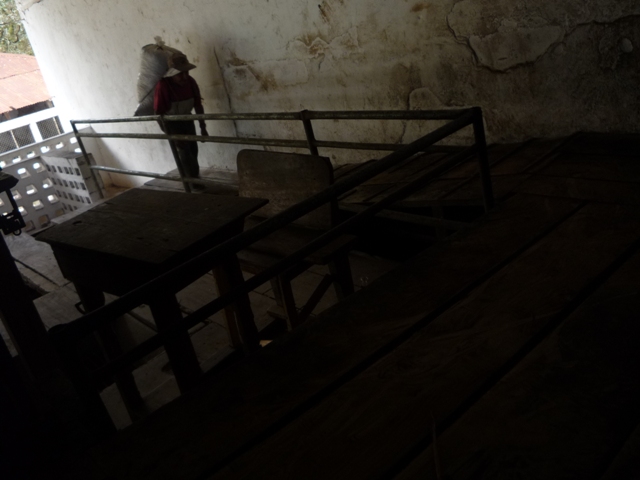Payback time. In November I confessed to taking some pleasure in seeing a few national champion baristas roll up their sleeves in Sustainable Harvest’s Seed-to-Cup Barista Challenge, and get humbled in the process. Then, I got mine — on a recent visit with farmers in Guatemala, something went terribly wrong after I carried a sack of freshly picked coffee cherries to the wet mill.
I spent the day with some wonderful people from ASOCAMPO — the Asociación Campesina Pochuteca — visiting some of the farther reaches of their farm La Florida and learning more about payments for ecosystem services for smallholder coffee farmers. Of course, all day as we hiked through the fields we saw families picking coffee. In the afternoon, they all began their long descent — in some cases, three kilometers or more — with 100-pound sacks of fresh cherries on their backs. I marveled at their strength and concentration as they streamed by. Later, as I watched this guy — easily 60 years old — drop off more than 100 pounds of cherries, I decided it was time for a first-hand experience.
Members of the association use a rope they call a “mecapán.” One side of the rope is strapped around the bottom half of the bag and the other side has a strip about 10-12 inches long where the rope widens and is placed against the forehead. The net effect looks a lot like the famous Diego Rivera mural of the flower seller, only with the strap across the forehead rather than the shoulders.
One of the members of the association had two bags to carry from his house to the mill — more than 500 meters but perhaps less than a kilometer in total. My troubles began when I offered to carry one for him. I tried the mecapan to disastrous effect — I suspect it would take weeks or months of daily training to build my neck muscles to the point where they would bear so much weight. So I heaved the bag onto my shoulders and the back of my neck, where it balanced fairly comfortably for the walk to the mill, with the exception of the fact that my head was so far forward under the weight of the coffee that I could only see my feet and what was immediately in front of me. At one point, a pick-up was parked on the road and I nearly walked right into it.
The walk was good and I felt pleased by my ability to bear the weight and concentrate enough to carry on a reasonably coherent conversation. When we walked up the flight of stairs to the scale at the wet mill, my sack weighed in at 105 pounds. I appreciated the experience, but it was artificial in too many ways to count.
What was very real, however (not even a little artificial), was the intense pain I felt when I laid down to sleep that night. My exhaustion finally overtook the pain, but the pain flared throughout the night as I shifted and woke me a half-dozen times. In the end, I am happy to have a better appreciation for what farmers do to create great coffee. But I will look forward in the future to identifying lower-impact opportunities for solidarity, and will stop taking pleasure in the suffering of baristas.



